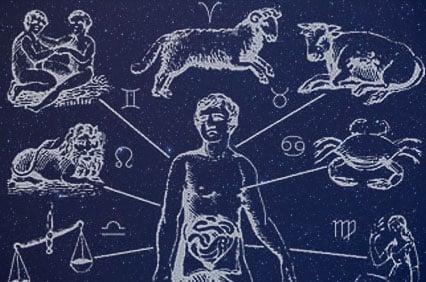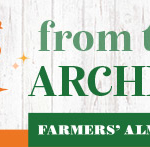Astrology vs. Astronomy: What’s the Difference?
Do you know the difference between the astrological and astronomical positions of the Moon? Learn why the Farmers' Almanac includes both.

If you’ve looked at the print version of the Farmers’ Almanac recently, you may have noticed that there are two different listings for the position of the Moon each month — one on the calendar page for that month, and one in a separate table at the front of the section. Because these two listings don’t always agree, it can be confusing for readers who don’t understand what the difference is. So what’s the deal? Why two separate entries, and why don’t they match up? Is our astronomer suffering from multiple personality disorder?
The answer is actually very simple. It all comes down to the difference between astronomy and astrology.
Astrology is an ancient practice that interprets the influence that the Sun and Moon have while they are in a specific sign of the zodiac. According to astrology, there are 12 divisions in the sky, measuring exactly 30 degrees each. Each of these divisions along the astrological circle is named after a major constellation found within it: Aries, Taurus, Gemini, Cancer, Leo, Virgo, Libra, Scorpio, Sagittarius, Capricorn, Aquarius, and Pisces. These are the 12 signs of the zodiac. Astrologers believe that the position of the Moon and Sun within these twelve divisions influence what happens on Earth, from the personalities of people born under a certain sign to the likelihood of certain kinds of undertakings to be successful.
Astronomy, on the other hand, is the scientific interpretation of matter in space. Astronomers don’t try to interpret the meaning of the Moon or Sun’s position in the sky, only to describe it as accurately as possible. For that reason, astronomers don’t divide the sky up into 12 equal slices, like a pie, but simply name the constellation the Moon sits closest on any given night. In astronomical terms, the Sun can even wander into a few constellations that are not members of the astrological zodiac, such as Sextans, the Sextant or Ophiuchus, the Serpent Bearer.
That’s why it’s perfectly possible, for example, for the Moon to be in Ophiuchus on an astronomical map while it’s in Sagittarius on an astrological one. In addition, astrological placement is fixed throughout history and does not take into account the precession of the equinoxes (the “wobble” that the Earth’s axis describes over a 26,000-year interval), so the Sun’s place according to astrology often differs considerably from its physical place according to astronomy.
Some Farmers’ Almanac readers are more interested in traditional lore and want to know the astrological position of the Moon. Others are backyard astronomers and are more interested in the astronomical position of the Moon. Some are equally curious about both, which is why you can find both the astrological place of the Moon and the physical, or astronomical, place of the Moon in your Almanac. Thus the reason we list both now in the print edition.

Caleb Weatherbee
Caleb Weatherbee is the official forecaster for the Farmers' Almanac. His name is actually a pseudonym that has been passed down through generations of Almanac prognosticators and has been used to conceal the true identity of the men and women behind our predictions.




